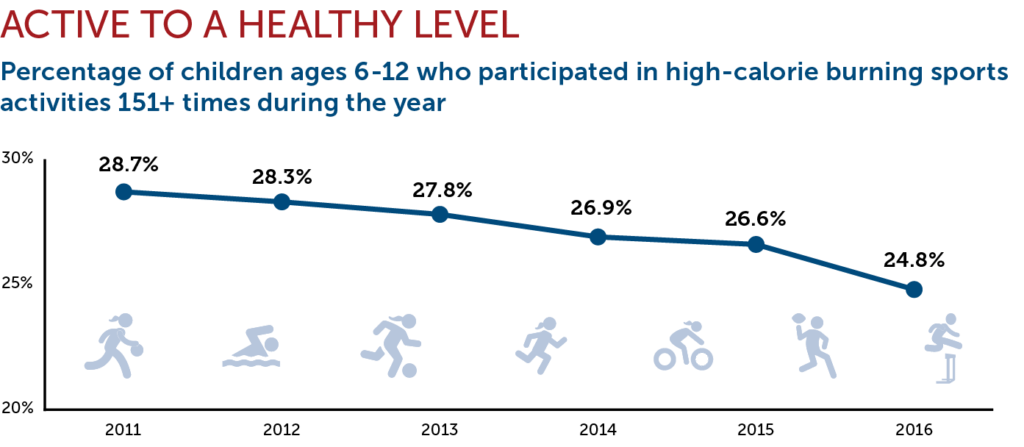In 2008, 45 percent of kids ages 6-12 played a team sport. Today, that figure is less than 37 percent. By 13, more than 70 percent of kids quit, a troubling trend for a nation already dealing with epidemics in childhood obesity, diabetes, drug abuse, poor academic performance, etc. Let’s look at why kids are quitting sports and what, if anything, can be done to combat it.
A variety of research and studies have found that the free fall in youth sports is related to a number of factors, including:
No Longer Fun
This one tops most lists. The simple fact is, more and more kids aren’t finding any fun in sports. Pressure from coaches and parents alike combined with a culture that likens sports to combat has drained the enjoyment from what are supposed to be games.
Bad Coaching
Coaches are the other list-topper. Kids and parents alike complain about coaches who don’t know what they’re doing, play favorites, are overzealous (or even cruel) routinely rank among the top reasons kids bail out.

Specialization
Numerous studies have singed out this trend as particularly troubling, and not just for its impact on participation rates. With coaches and parents encouraging kids to focus exclusively on one sport (and investing heavily in specialized training at younger and younger ages), the ‘ordinary’ kids who might have filled the ranks of a team no longer fit in (or don’t have the income to compete on a level playing field – see Cost).
Cost
The rapid growth in youth clubs has resulted in the birth of an ‘up or out’ mentality, meaning kids either join pricey travel leagues and train year-round, or they are quickly edged out. “Sports in America have separated into sport-haves and have-nots,” says Tom Farrey, executive director of Aspen’s Sports & Society program. “All that matters is if kids come from a family that has resources. If you don’t have money, it’s hard to play.”
Stress
To some degree this ties in with the ‘no fun’ argument, but with a twist: often times the kids still enjoy the sport, but parents, coaches, and our culture at-large place so much pressure on results that kids become anxious and stressed-out. What is supposed to be a game that relieves stress has, instead, become one that adds to it.
How to Fix Youth Sports
Is there any good news in all of this? Yes, and no. On the bright side, many kids who bail out on team sports ultimately migrate toward activities that are better suited to them physically and temperamentally. While the so-called Big Four sports (baseball, basketball, football, and soccer have all experienced big losses), others have grown (lacrosse, tennis, ice hockey, and gymnastics).
Similarly, many kids move to other activities, including the arts, the outdoors, or simply spending more time with friend and family.

The downside, of course, is that many kids are at greater risk of health problems. They also miss out on many of the positives associated with sports, including stronger leadership and networking skills, improved academic performance, better relationships, etc.
Fortunately, the ongoing decline in youth sports is garnering attention all the way up to the professional ranks, where commissioners, coaches, athletic directors, and team owners are brainstorming ways to solve the problem.
For instance, the Aspen Institute’s Project Play 2020 is a multi-year effort to address and remedy many of these challenges. The group believes that increasing youth sports participation will offset tens of billions in healthcare costs associated with sedentary kids, not to mention economic productivity costs (healthy kids become healthy adults who are able to work, raise families, etc.).
The project’s goals include standardized training for coaches in order to weed out the bad ones who are chasing away kids; improved injury prevention training and concussion awareness; reducing specialization and increasing cross-sport participation; and leveling the economic playing field to ensure all kids, regardless of their socioeconomic background, can participate.
